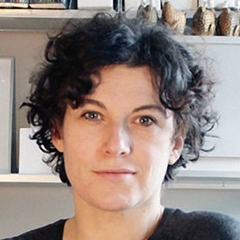Polymer-based Instructive Scaffolds for Regenerative Medicine
A special issue of Materials (ISSN 1996-1944). This special issue belongs to the section "Biomaterials".
Deadline for manuscript submissions: closed (15 July 2019) | Viewed by 40091
Special Issue Editors
Interests: polymer synthesis and characterization; biomimetic polymers; synthetic and natural polymers; smart polymers and stimuli-responsive hydrogels; cell-biomaterial interactions; microstructured 2D and 3D structure for regenerative medicine; electrospinning; 3D printing and bioprinting
Special Issue Information
Dear Colleagues,
Since its inception, a few decades ago, regenerative medicine has shown an impressive evolution and a broad range of therapeutic strategies can be now encountered at all stages of investigation.
The considerable, interdisciplinary effort in this field has led to an increasingly refined understanding of the mechanisms involved in tissue regeneration and of the factors that play a role in regulating the process. Among them, scaffolds and carrier materials are critical in most applications.
Besides the bare physical support, scaffold materials and architectures can now be designed to provide specific cues for directing cell fate and guide tissue regeneration. Polymers containing specific adhesion sequences, micro- and nano patterning, and hydrogels loaded with biologically active molecules are all common strategies along this track.
In this scenario, this Special Issue focuses on advanced materials, fabrication and modification techniques enabling the preparation of sophisticated scaffolds capable to promote optimal regenerative responses from cells and enhance the regeneration processes to, ultimately, support clinical translation of innovative approaches.
We kindly invite you to submit a manuscript(s) for this Special Issue. Full papers, communications, and reviews are all welcome.
Prof. Silvia Farè
Dr. Lorenza Draghi
Guest Editors
Manuscript Submission Information
Manuscripts should be submitted online at www.mdpi.com by registering and logging in to this website. Once you are registered, click here to go to the submission form. Manuscripts can be submitted until the deadline. All submissions that pass pre-check are peer-reviewed. Accepted papers will be published continuously in the journal (as soon as accepted) and will be listed together on the special issue website. Research articles, review articles as well as short communications are invited. For planned papers, a title and short abstract (about 100 words) can be sent to the Editorial Office for announcement on this website.
Submitted manuscripts should not have been published previously, nor be under consideration for publication elsewhere (except conference proceedings papers). All manuscripts are thoroughly refereed through a single-blind peer-review process. A guide for authors and other relevant information for submission of manuscripts is available on the Instructions for Authors page. Materials is an international peer-reviewed open access semimonthly journal published by MDPI.
Please visit the Instructions for Authors page before submitting a manuscript. The Article Processing Charge (APC) for publication in this open access journal is 2600 CHF (Swiss Francs). Submitted papers should be well formatted and use good English. Authors may use MDPI's English editing service prior to publication or during author revisions.
Keywords
- instructive scaffolds
- natural polymers
- bioconiugated polymers
- hydrogels
- additive manufacturing
- bioprinting
- electrospinning
- micro- and nano-patterning







